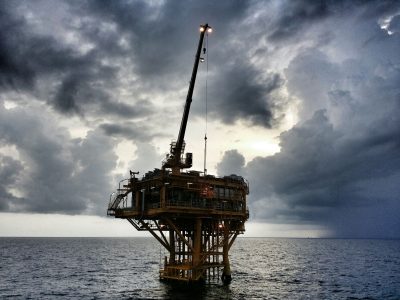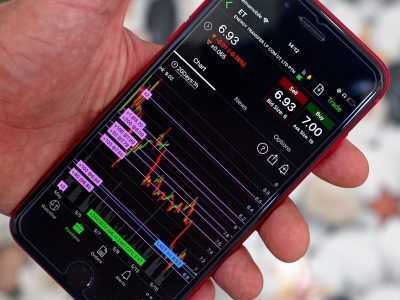
Industrial metals had a turbulent last week after the dollar surged on the back of Donald Trump winning the 2024 US presidential elections.
Prices slumped as a stronger dollar makes metals priced in the greenback more expensive for overseas buyers.
This limits demand for the commodities and drags down prices.
Moreover, a Trump victory also raised concerns about a possible trade war with China, one of the top producers and consumers of industrial metals.
Trump had vowed to impose tariffs on all imported goods from China, which is likely to affect exports of industrial metals from the Asian giant to the US.
Prices fall sharply after US election results
Copper prices on the London Metal Exchange fell 3.2% since last Tuesday as the appreciation of the dollar weighed on sentiments.
Similarly, the three-month zinc contract on LME also dipped 4% since election day. Aluminium prices dropped more than 2.2% in the same time period.
At the time of writing, copper prices on LME were down 0.1% at $9,435 per ton, while zinc was up 0.8% at $3,015 per ton.
The three-month aluminium contract fell more than 1% to $2,601.50 per ton.
Ole Sloth Hansen, head of commodities strategy at Saxo Bank, said in a note:
A stronger USD initially helped drive broad weakness across the commodities sector, with the metals sector suffering the most on expectations a Trump-led majority in Congress will introduce a 10% tariff on all countries, with 60% on specific nations, and potentially revoke China’s Permanent Normal Trade Relations (PNTR) status, granted in 2020, which has been a cornerstone of US-China relations—a move feared to trigger a new wave of trade tensions and economic disruptions.
China plan disappoints market
Copper and other industrial metals declined on Friday after China’s National People’s Congress’s stimulus package disappointed the market.
On Friday, officials in Beijing announced a total 10-trillion yuan ($1 trillion) programme to refinance local government debts.
This will include 6 trillion yuan over three years and another 4 trillion yuan over five years.
The announcement came after a week-long meeting of China’s top legislatures that concluded after the US presidential election and Federal Reserve’s latest policy meeting, where the central bank announced a largely expected 25-basis point interest-rate cut.
“After Trump’s win in the presidential election, markets were hoping for a larger-than-expected stimulus,” Warren Patterson, head of commodities strategy at ING Group, said.
Since September, China has announced several measures to boost its economy, but the lack of clarity has underwhelmed the metals market.
“The lack of clarity over the size and composition of the package has so far limited the impact,” Hansen said.
However, ING Group’s China economist believes that there may be more to come once policymakers have more clarity on what a new Trump administration may do next year.
“Chinese policy provides an upside risk to our industrial metals outlook, depending on the strength and the speed of the rollout of measures,” ING Group said.
Signs of life from China supports iron ore
In recent days, the iron ore price on the Singapore Exchange remained stable around $100 per ton.
Positive signals out of China supported prices. Imports of iron ore by China rose in October by 4.5% on a year-on-year basis, and were above the 100 million ton mark, according to Commerzbank AG.
At the same time, there are growing signs that the situation in the real estate market is improving somewhat at a low level.
According to daily data from 30 major cities, real estate sales were recently only around 5% below the previous year’s figure.
Analysts at Commerzbank AG said that this was a significant improvement compared with earlier months.
In addition, steel production in China also showed signs of life. In the last 11 days of October, production was above the previous year’s level for the first time since June, Commerzbank said.
However, Volkmar Baur, FX analyst at Commerzbank, believes that since there were no additional announcements regarding the real estate market or private consumption in China, the price of iron ore could come under pressure in the initial reaction.
Industrial metals may remain lower in short-term
In terms of the US, metal prices may get some support from infrastructure spending plans of the Trump administration in the long-term.
“We believe the initial negative price response should cover the near-term risks, as infrastructure spending plans and potential deregulation may boost demand for metals in the medium to long term,” Saxo Bank’s Hansen said in the note.
Additionally, the last time Trump imposed tariffs on China, it took almost a year before implementation, and a similar timeframe or a watered-down version may limit the overall impact.
On the other hand, analysts believe that US tariffs have not always had the desired effect on exports from China.
Commerzbank’s commodity analyst Barbara Lambrecht said in a report:
It should also be noted that US tariffs have not always had a decisive and lasting effect on China’s export performance in the past, partly because trade flows often find other routes.
This appears to have been the case at least when the US imposed tariffs on Chinese aluminium in 2018.
“At that time, the share of Chinese aluminium exports to the US fell, but there was little sign of a slowdown in China’s aluminium exports as a whole.”
Therefore in the short term, prices of industrial metals may be affected by increased uncertainty over policy changes in the US and limited clarity over China’s fiscal measures.
However, this could change if China comes out with more focused spending in the coming months.
The post Uncertainty in metals market post Trump victory. Will prices rise? appeared first on Invezz









